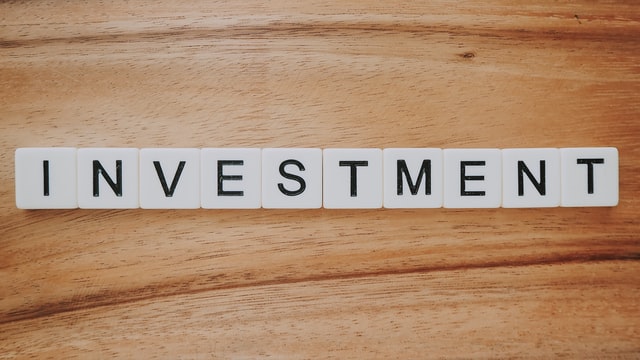Key points:
Traditional Chinese Medicine II fell 3.82% last week, and the traditional Chinese medicine sector continued its callback trend
Last week, pharmaceutical biology closed at 953292 points, down 1.38%; Traditional Chinese Medicine II closed at 727617 points, down 3.82%; Chemical pharmaceutical closed at 101704 points, down 3.58%; Biological products closed at 986688 points, down 5.17%; Pharmaceutical business closed at 569739 points, down 2.97%; Medical devices closed at 862168 points, up 2.94%; Medical services closed at 977458 points, up 2.33%. In addition to devices and services, other sub sectors showed a downward trend, and the decline of traditional Chinese medicine was relatively large.
In terms of the company's performance, the top companies are: Dali Pharmaceutical Co.Ltd(603963) , Jinghua Pharmaceutical Group Co.Ltd(002349) , Guangdong Zhongsheng Pharmaceutical Co.Ltd(002317) , Kpc Pharmaceuticals Inc(600422) , Kunming Longjin Pharmaceutical Co.Ltd(002750) ; Companies with poor performance include: Xiangxue Pharmaceutical Co.Ltd(300147) , Shanghai Kaibao Pharmaceutical Co.Ltd(300039) , Tianjin Chase Sun Pharmaceutical Co.Ltd(300026) , Shijiazhuang Yiling Pharmaceutical Co.Ltd(002603) , Jiangsu Kanion Pharmaceutical Co.Ltd(600557) .
Traditional Chinese medicine PE (TTM) decreased by 1.3 times and Pb (LF) decreased by 0.12 times
Last week, the PE of traditional Chinese medicine was 32.73 times, the maximum value of PE in recent year was 38.81 and the minimum value was 28.78; The current Pb is 2.94 times, the maximum value of Pb in recent year is 3.56, and the minimum value is 2.7. PE in traditional Chinese medicine decreased by 1.3 times and Pb decreased by 0.12 times. The valuation of the traditional Chinese medicine industry fell slightly, which is now slightly higher than the median level in the past year. The valuation premium rate of traditional Chinese medicine sector relative to Shanghai and Shenzhen 300 was 166.3%.
The price index of traditional Chinese medicine continued to rise
Last week, the total price index of traditional Chinese medicine was 221.53 points, up 2.2 percentage points from the previous week. Twelve categories of Chinese herbal medicines showed a trend of nine rises and three falls, among which the price index of mineral herbal medicines led the rise. Recently, the heat of the Chinese herbal medicine market has been maintained at a high level, the hot spots have continued, the demand for epidemic related varieties has increased, and the shipment volume under the condition of national centralized procurement is large. Subsequently, with the warmer weather, the price is expected to maintain a slight rise.
Nearly 50% of enterprises in the traditional Chinese medicine industry released their annual reports, and the overall performance was good
As of April 19, 166 listed companies in the pharmaceutical industry have disclosed their annual reports, of which 33 listed companies of traditional Chinese medicine have disclosed their annual reports, accounting for about 46% of the total number of A-share listed companies of traditional Chinese medicine. Among the 33 traditional Chinese medicine enterprises, 30 companies achieved positive growth in revenue, accounting for 91%, and 23 companies achieved positive growth in net profit after deduction from non parent companies, accounting for 70%. The number of companies with a growth rate of more than 20% in revenue and net profit deducted from non parent companies accounted for 30% and 58% respectively. From the published annual report, the performance of traditional Chinese medicine enterprises is generally good.
Traditional Chinese medicine has entered a new stage of development with policy support in recent years. With policy support and catalysis, the traditional Chinese medicine industry has also ushered in greater investment opportunities. From the demand side, the rigid demand characteristics of the pharmaceutical industry and the upgrading of pharmaceutical consumption jointly support the steady growth of the demand of the traditional Chinese medicine industry. From the perspective of policy, a series of favorable policies have been formed to promote the innovation of traditional Chinese medicine, the development of formula particles, the support of medical insurance and payment policies, and the continuous addition of traditional Chinese medicine decoction pieces can not exceed 25%, bringing policy dividends and new demand to the traditional Chinese medicine industry. The unique advantage of "preventing disease" brings development opportunities to the traditional Chinese medicine industry. From the perspective of performance, the traditional Chinese medicine industry has walked out of the low point and showed a marginal improvement trend. From the valuation side, the traditional Chinese medicine industry still has relatively obvious valuation advantages. "Policy + pharmaceutical consumption upgrading + performance improvement + valuation advantage" jointly build investment opportunities for the traditional Chinese medicine industry. Cost promotion constitutes a short-term driving factor. It is suggested to pay attention to the areas of policy encouragement and policy haven. (1) Pay attention to the innovation of modern traditional Chinese medicine, and pay attention to the innovation targets of modern traditional Chinese medicine with strong R & D strength and layout of large categories (large market: cardio cerebrovascular + fast growth: pediatric drugs);
(2) pay attention to the advantages of brand traditional Chinese medicine, formula and raw materials, and jointly build a moat of brand traditional Chinese medicine; (3) Benefit from consumption upgrading and pay attention to the subject matter of industrial chain extension and strong brand advantage.
At present, it is in the performance disclosure season. It is suggested to pay attention to the pre disclosure of the performance of listed companies and the subject matter with excellent performance in the annual report.
Risk tips
(1) stricter industrial policies;
(2) industry and listed company performance fluctuation risk.
